Tutor Training
TASC Home
TASC Hours and Contact Info
Writing Center
Math Computer Lab
Online Tutoring
Language Arts Lab
Tutor Training
Tutoring Techniques – The Actual Process
As well as having to overcome some logistical and physical hurdles, you and your tutee will also need some important basic information to have a successful tutoring session. In the tutoring field, this information will include an introduction to tutoring techniques, learning styles, and study strategies. The interchange between tutee and tutor plays a vital role in the dynamics of a session. Because of this, it is very important that the tutor use appropriate and varied tutoring techniques. The following is a list of techniques that should be used.
Tutoring vs. Lecturing
Sometimes it is necessary to clarify and explain a topic if the tutor finds that a tutee has not been introduced to a key point (or piece of information) that is necessary to understand the concept. When doing this, make sure that you keep your explanations clear, minimal, and to the point. Lecture only when necessary.
“What”, you say? “Why is this? My instructor lectures all the time.” Well, that’s it exactly. You are not an instructor. It is important to keep in mind that you are there to provide opportunity – the opportunity for the tutee to find and use the available resources he/she has at his/her disposal. Sometimes this will mean you but, more often than not, this will mean the tutee’s textbook, his/her lecture notes, his/her past tests, previous examples and so on. Make sure to provide the opportunity to use resources other than yourself.
Questions and Listening
It is just as important (if not more important) for the tutor to guide the tutee in doing most of the explaining. This will reinforce learning for the tutee and help the tutor identify problem areas.
Two of the key ingredients in guiding this successful interchange are posing questions and active listening. Examples of questioning techniques follow:
- Ask open-ended questions. By posing questions that require more than a yes/no response, you encourage the tutee to start thinking.
- “Where do you think we should start?”
- “What are the steps involved in working this problem?”
- “What is the definition of that term?”
- Ask probing questions. Probing questions follow up on a student’s contribution.
- “What will happen if what you said is true?”
- “What made you think that?”
- “What is the opposite of this position?”
- “You’re correct. The answer to this question is false. What would be needed to make it true?”
- Rephrase questions. Try repeating your question in a slightly different manner.
- Reword your original question.
- Break your original question into smaller parts.
- Change the inflection in your voice when repeating the original question.
The next key is to actually listen to your tutee’s responses. This sounds easy, but it is harder than you may think. Listening is an acquired skill. In normal conversation, we often do not really listen to others. We hear what they say but do not listen carefully enough to “read between the lines”. In order to be an effective tutor, you have to slow down and concentrate on what your tutee is saying.
- Is he/she grasping the concept?
- Can he/she explain it easily or does it take some effort?
- Is his/her body language saying anything?
In order to get the answers to these and other questions, you must listen carefully and observe purposefully.
Silence?
A common misconception of new tutors is that your tutee should ALWAYS feel comfortable. Sometimes, “comfortable” is not the best solution. For example–you have posed a question to your tutee. 8-10 seconds pass with no response. You start to feel awkward. Should you say something? Perhaps another question will spur a response.
Another question or even a clarification might help, but often, just being patient while waiting for a response will yield results. Because the tutor understands the information, he/she is much quicker in coming up with a response. Because of this, it is often difficult for a tutor to anticipate the amount of time a tutee needs to process the information. Take this into consideration when that uncomfortable silence sets in. Since this technique is often uncomfortable for both the tutor and tutee, it can be a difficult tool to implement. However, when used appropriately, your tutee will learn to think critically and become a more independent learner.
Tutee Summaries
Along with listening, it is very important to spur your tutee into giving a summary of what has been covered. If steps are involved in finding the solution, make sure that all steps are included (in the right order) by your tutee when summarizing. Try to encourage more than a parroting of the steps. Sometimes, having the tutee say the steps in his/her own words will decrease the tendency to parrot responses. If concepts are involved, have the tutee paraphrase the ideas in his/her own words.
This simple summary will help you determine if you can move on to another topic or need to stay with the present one. If the summary is difficult for the tutee, stay where you are until he/she can repeat it with ease. Use the questioning technique to guide the tutee to the correct answer if he/she has gotten some of the steps out of order.
Gauge Your Tutee’s Comprehension.
Along with tutee summaries, it is also important to continuously gauge your tutee’s level of comprehension. Do not assume knowledge on the part of the tutee. Let’s say a tutor and tutee start a session. The tutee explains that he/she wants help with one question. The question asks the tutee to diagram a hyperbola. The tutor asks, “Where would you start?” Although this is a good question to evaluate whether or not the tutee knows the steps to apply in order to diagram the problem, a more appropriate question would have been, “Can you tell me what a hyperbola is?” Remember, do not assume knowledge. Start with the basics first. Here are some ways to gauge your tutee’s comprehension:
- Start with vocabulary.
- Make sure the tutee understands all associated terminology.
- Have the tutee summarize what you have said.
- Quiz the tutee on information you have covered together.
- Have the tutee explain the topic to you as if he/she were the tutor.
- Ask the tutee if he/she understands.
- Ask probing questions.
- Have the tutee draw a diagram of the topic(s) covered (if appropriate).
Drawings and Diagrams
For a visual learner, tactile learners, or for certain types of content fields like science, you may find that a drawing or diagram is the best way to convey information. It is much easier to understand a drawing of carbon dioxide than an explanation of carbon dioxide. Visual learners will need to see, usually on paper, what you are describing. For tactile learners, (those who learn by doing), have the tutee build the model or diagram himself/herself. The act of building the model will reinforce learning.
Use Positive Reinforcement
Your tutees will need you to notice their successes as well as their mistakes. That’s where reinforcements come in. When using reinforcements, ensure that you reinforce improvement without over-exaggerating the student’s gain. The more specific you are about the gain, the better. Following are some examples of positive reinforcement:
- Verbal
- “Good job on ______!”
- “You are really doing much better with _____!”
- “I like the way you did __!”
- “This looks better than the last time.”
- “You have really been working hard at this. I am proud of your effort.”
- “All right!”
- Nonverbal
- Use facial expressions – smile, look surprised.
- Nod your head.
- High-five or give the thumbs up sign.
Reinforcements help the tutee have a sense of accomplishment, provide a reward, and give tutees an incentive to do more. After all, you noticed!
Let Your Tutee Do the Work
It is false to assume that a good tutor always has many returning tutees waiting in line when the tutor comes on duty. If a tutee can only do his work with your help, what happens when you are no longer there to explain, in the classroom or taking exams? Aid the tutee in finding other resources and developing appropriate study strategies. With these tools, they can succeed academically without you. A tutor should be working his/her way out of a job. By allowing the tutee to have control of the process, you encourage independent learning and help the tutee gain confidence in their own ability and an awareness of their learning styles. So how do you do this? Let the tutee have the pencil. Let the tutee look up the information in the book. Let the tutee draw the diagram. Give control back to the tutee. Let the tutee have control of the mouse/keyboard.
Part of the learning process is frustrating. Part of the learning process is getting things incorrect. Part of the learning process is slow. If you are “showing” everything to your tutee, any successes you experience belong to only you – not to your tutee. Guide the direction of your tutees’ thinking; do not do the thinking for them. The more independent they become, the better tutor you are.
 TRCC EXTRANET
TRCC EXTRANET




